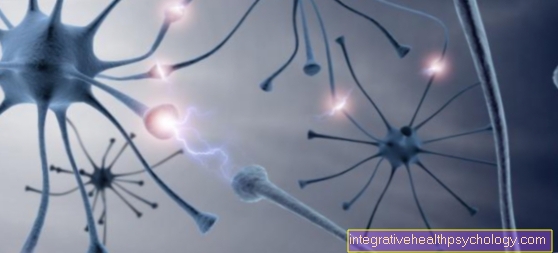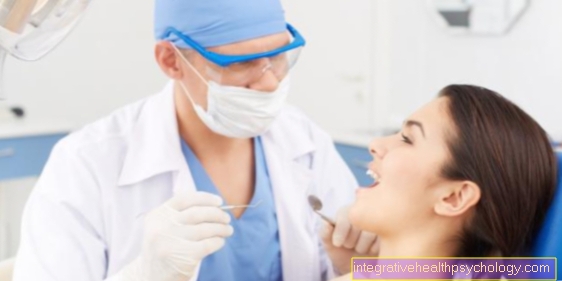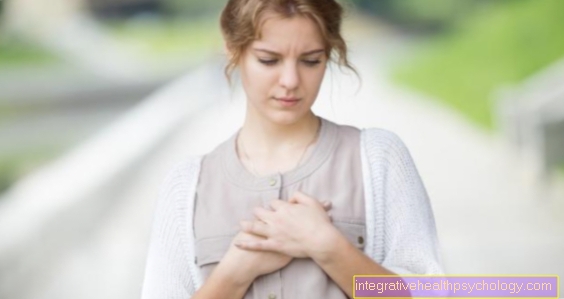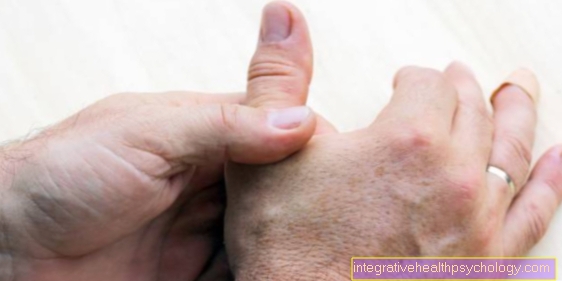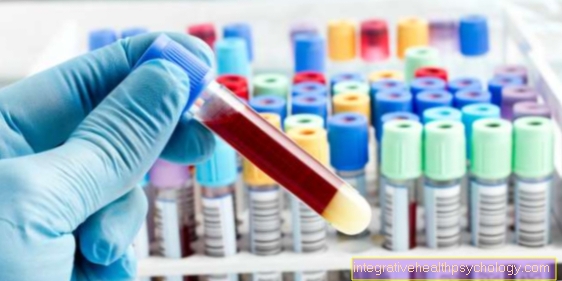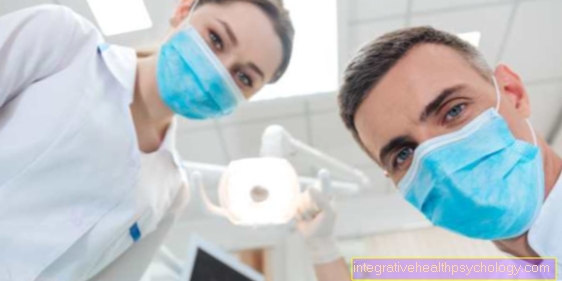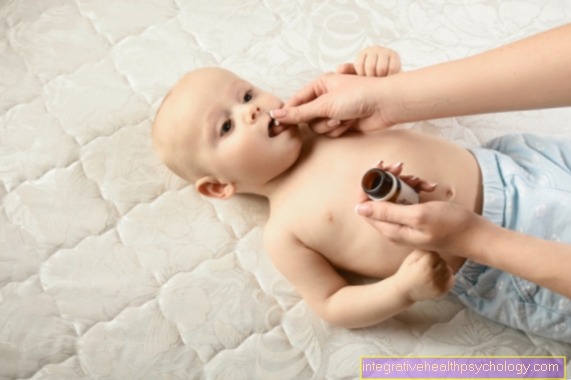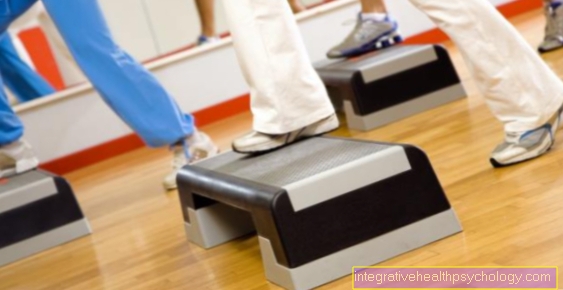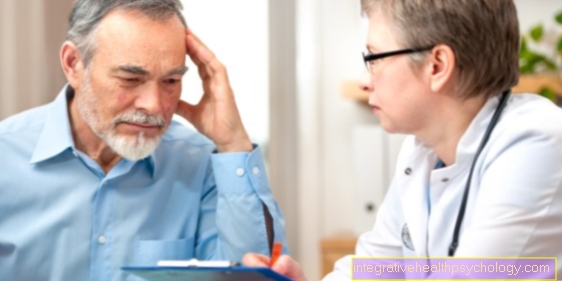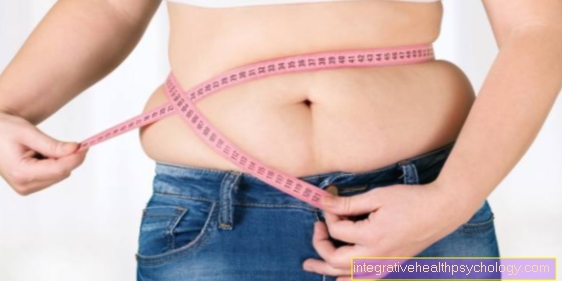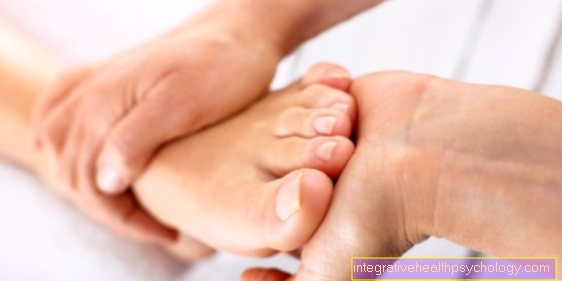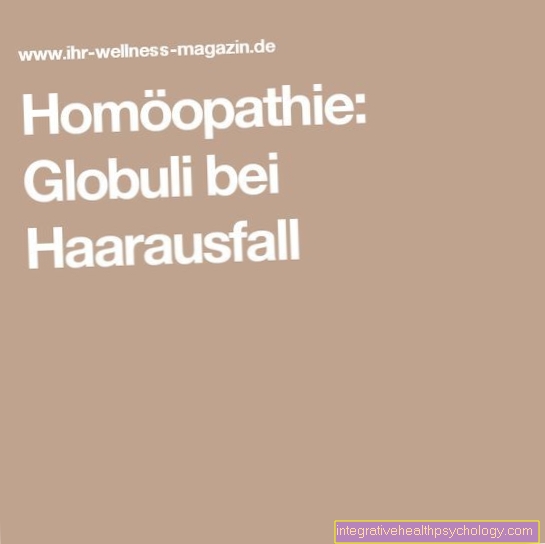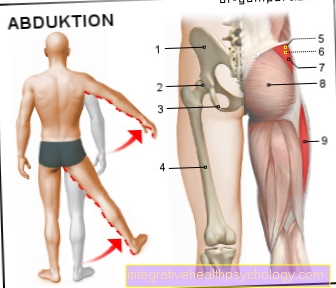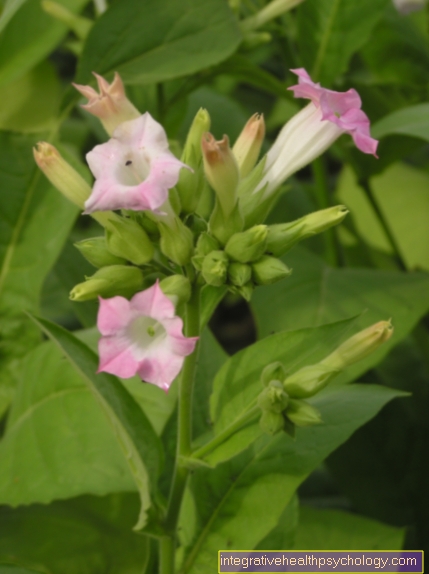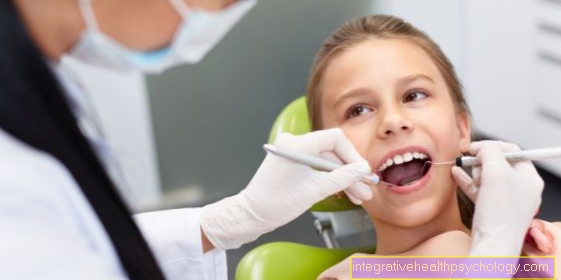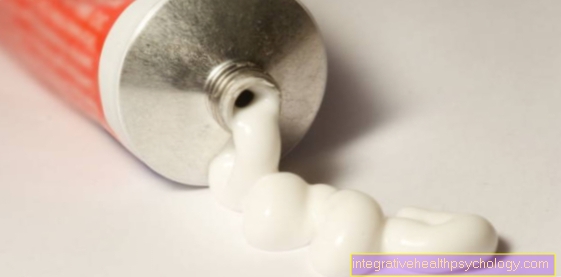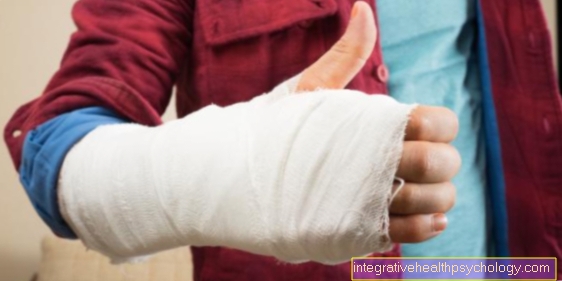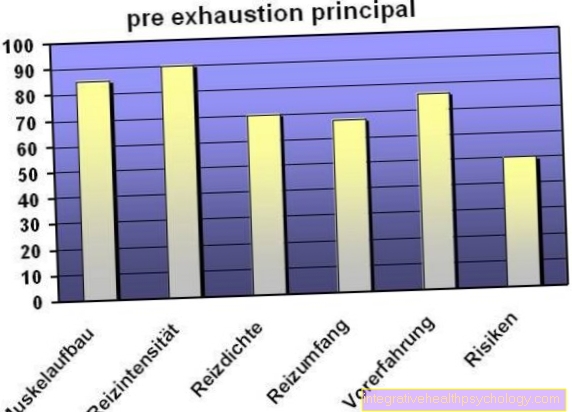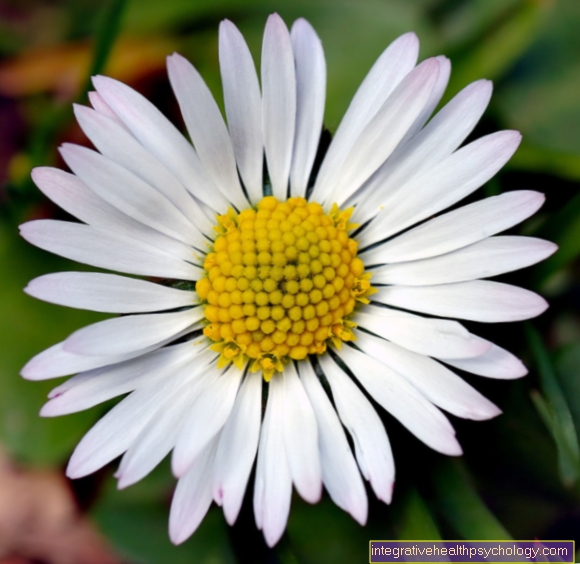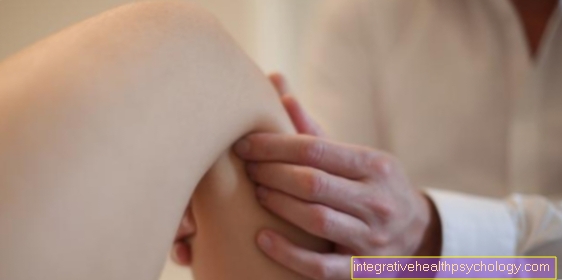Internal rotation
introduction
Internal rotation is the rotational movement of an extremity around its longitudinal axis. The direction of rotation points inwards. The outer side of the extremity is turned towards the body (after medial) turned. To perform an internal rotation, the joint must be a ball joint or a swivel / hinge joint. Ball joints are, for example, the shoulder or hip joint. Rotary / hinge joints are, for example, the knee joint or the ellbow-spoke joint.

Internal rotation in the hip
The hip joint is a nut joint and thus belongs to the group of Ball joints. As a ball joint, it is capable to be moved in all directions. The hip joint consists of a small one Femoral headformed by the femur and a large one Socketformed by the acetabulum. The joint socket completely surrounds the femoral head, so that a dislocation (Dislocation) of the joint rather seldom is. In addition, the hip joint is through numerous tight ligaments and muscles stabilized.
The Degrees of freedom - an indication of how many degrees a joint can be moved - are for the hip joint: flexion up to approx. 140 °, extension up to approx. 20 °, splaying (Abduction) up to approx. 50 ° with the hip joint extended, pulling towards (Adduction) up to approx. 30 ° with the hip joint extended, Internal rotation by approx. 40 °, External rotation by approx. 50 °, with the hip joint flexed.
The main musclesthat cause internal rotation in the hip joint are the Glutes (Gluteus medius muscle and Gluteus minimus muscle), the Thigh Tie Tensioner (Tensor fasciae latae muscle), as well as the large adductor muscles (Adductor magnus muscle). A painful internal rotation in the hip joint speaks primarily for one Hip arthrosis.
Internal rotation in the shoulder
The Shoulder joint (Glenohumeral joint) is just like the hip joint Ball joint. However, the shoulder joint consists of one relatively large joint headformed by the humerus, and from a relative small, flat socketthat is formed by the shoulder blade. Furthermore, the shoulder joint is largely only through the Rotator cuff stabilizedso that in accidents very much dislocate quickly can. However, the shoulder joint also has one for this very high mobilitywhich is indispensable for the arm.
The others also play an important role in the mobility of the shoulder joint Partial joints of the shoulder girdle - the Acromioclavicular joint and the sternoclavicular joint. Depending on which movement is to be performed, the position of the collarbone and shoulder blade is adapted to the movement.
The main muscle for internal rotation in the shoulder joint is the Subscapularis muscle. The Degrees of freedom of the shoulder joint for the Anteversion (Movement of the arm forward) is 90 °, a lift of the arm over 90 ° to 170 ° (elevation) is only possible with the participation of the shoulder girdle. A Retro version (Movement of the arm backwards) is possible up to 40 °. A sole one Abduction in the shoulder joint up to 90 ° is possible, with the involvement of the shoulder girdle up to 180 °. A Adduction is possible up to 20-40 °. The degree of freedom for the Internal rotation of the shoulder joint is 95 °, for the External rotation 40-60°.
The Internal rotation in the shoulder joint can over the Apron handle to be checked. When holding the apron, the patient is asked to clasp their hands behind their backs. A painful internal rotation in the shoulder joint often stands for one Damage or rupture of the rotator cuff, especially the subscapularis muscle.
Internal rotation of the knee
The Knee joint (Articulatio genus) is a compound joint that consists of the Thighbones, the Kneecap and the Shin exists and is one of the swivel / hinge joints. More specifically, the knee joint consists of the kneecap joint, which is formed by the thigh bone with the kneecap, and the popliteal joint, which is formed by the thigh and lower leg bones.
At the back of the knee joint, in the Hollow of the knee (Popliteal fossa), numerous run important blood vessels, nerves and lymphatics. The knee joint is stabilized and secured by numerous ligaments and muscles. The most important Internal rotators in the knee are the Gracilis muscle, the Semimembranosus muscle and the Semitendinosus muscle.
As a swivel / hinge joint, the knee joint is able to perform internal and external rotation in the flexed state. The Degrees of freedom for the knee joint: flexion approx. 120-150 °, extension up to approx. 10 °, Internal rotation of 10 ° (with the knee bent) and an external rotation of 30-40 ° (when the knee is bent). The internal rotation in the knee can be controlled by the Steinmann I sign to be checked. The examiner holds the patient's leg and bends it by 90 ° in the knee and hip. Then he performs an internal rotation and an external rotation. A painful internal rotation of the knee usually speaks for one Damage to the lateral meniscus.
Internal rotation of the ankle
The Ankle consists several partial joints. These are the two largest partial joints upper and the lower ankle. Together they form a functional unit and are called Articulatio cylindrica. The upper Ankle joint belongs to the Hinge joints, and allows an uplift (Dorsiflexion) and a lowering (Plantar flexion) of the foot, and to a lesser extent also one Internal rotation and an external rotation. Also an input (Pronation) and outward rotation (Supination) of the foot is possible. in the lower ankle only two movements are possible - the Eversion (Lifting the outside of the foot) and the inversion (Lifting the inside of the foot).

